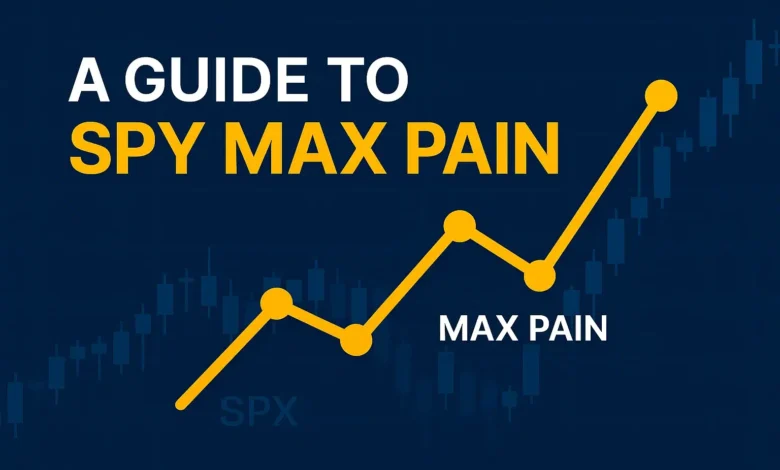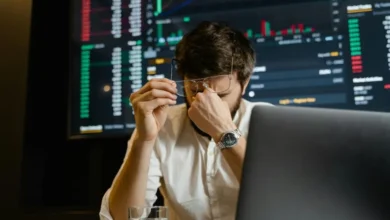
In the world of options trading, many strategies and indicators compete for the attention of traders. Some rely heavily on technical charts, while others prefer fundamental market analysis. Among these tools, one concept has gained traction over the years for its ability to reveal the behavior of both options buyers and sellers: the idea of max pain. When applied to the most traded exchange-traded fund in the world, the SPDR S&P 500 ETF, more commonly known as SPY, this principle becomes especially interesting. This Max Pain SPY Trading Guide explores what the theory means, how it works, and how traders can interpret it without falling into the trap of overreliance.
What is Max Pain
The phrase max pain describes the point at which the largest number of options contracts expire worthless. It is the strike price where option buyers suffer the greatest losses while option sellers experience the most gains. The concept is based on the observation that, as expiration nears, prices often gravitate toward a level that minimizes payouts to option holders. In other words, the max pain level is where the market inflicts the most financial pain on the majority of traders holding open contracts.
When this theory is applied to SPY, which represents the S&P 500 index and is heavily traded, the implications can be significant. Because SPY options are among the most liquid in the market, the max pain level often draws the attention of both retail traders and large institutions.
How Max Pain SPY Works
To calculate max pain, one examines the open interest of both calls and puts across different strike prices. The level where the combined dollar value of losses for option buyers is greatest becomes the max pain point. For SPY, this calculation can shift daily depending on the flow of contracts and market activity. As expiration Friday approaches, traders sometimes notice that SPY prices gravitate toward this level, leading to speculation about whether institutions with large positions influence the market to their benefit.
The Max Pain SPY indicator does not guarantee a specific price outcome, but it provides insight into areas where price pressure could increase. For example, if max pain is identified at a certain strike, and SPY is trading slightly above or below that level, some traders expect price movement toward that strike as expiration nears.
Why Traders Pay Attention
Traders focus on Max Pain SPY because it can offer clues about short-term price direction. Options expiration has a powerful influence on market dynamics, and SPY, with its massive daily volume, reflects this influence more than most instruments. Understanding max pain can help traders avoid being blindsided by sudden moves that appear to align with options-related pressure rather than pure market fundamentals.
For short-term traders, the concept is often used as part of a broader strategy. They may compare the max pain level with technical support and resistance zones to see if multiple signals point to the same area. Long-term investors may use it as a way to better understand market mechanics, even if they do not act on it directly.
The Limitations of Max Pain
While Max Pain SPY can be insightful, it is not a crystal ball. Markets are influenced by countless factors beyond options open interest. Economic data releases, Federal Reserve announcements, geopolitical events, and unexpected market shocks can easily push SPY far from its max pain level. Traders who rely solely on this theory risk misinterpreting the market and making decisions based on incomplete information.
Another limitation is timing. While price may drift toward max pain as expiration nears, it does not always happen smoothly or predictably. In some weeks, SPY may close well away from the calculated level. This inconsistency is why experienced traders view it as one tool among many rather than a standalone strategy.
Using Max Pain SPY in Practice
Successful use of Max Pain SPY often comes from combining it with other analysis techniques. For example, if SPY is approaching a major technical resistance point that coincides with the max pain level, traders may interpret this overlap as stronger evidence of a potential price stall. On the other hand, if the max pain level is far from current price action, traders may choose to ignore it, recognizing that other market forces dominate.
Many traders watch how SPY behaves in the final days leading up to options expiration. If the price begins drifting toward the max pain strike, it can confirm the theory in practice. However, the goal is not to assume movement will always reach that level, but rather to stay aware of the pressures influencing price behavior during a critical time in the options cycle.
The Broader Impact on Market Psychology
The concept of max pain also plays a role in trader psychology. Knowing that markets may move in ways that disadvantage the majority of options holders can influence how traders view their own positions. It reminds them that large institutions and market makers often have more control than individual traders. For many, Max Pain SPY is a lesson in humility, emphasizing the importance of risk management and cautious position sizing.
At the same time, the idea can also foster curiosity and deeper learning. By studying how SPY reacts around expiration, traders can gain a clearer understanding of how options markets interact with underlying securities. This education can make them better prepared for future trades, even if they ultimately decide not to use max pain as a central strategy.
Conclusion
Max Pain SPY is a fascinating concept in the world of options trading. It represents the strike price where the most contracts expire worthless, often creating pressure that can shape short-term price action. For SPY, one of the most actively traded ETFs in the world, the theory carries special weight because of the volume of options involved.
However, while the Max Pain SPY indicator can provide valuable insight, it is not foolproof. Market forces are vast and unpredictable, and relying exclusively on max pain is unlikely to produce consistent success. Instead, traders should treat it as one of many tools in their toolkit, using it alongside technical analysis, fundamental research, and sound risk management.




